I’ve read a bunch of Eisner award-winning works in the past couple of years, but I never got to read anything by Will Eisner until a friend lent me a copy of his masterpiece, The Contract with God Trilogy last year. Shame that I only got to read it this year (I’m sorry!), but the guilt of having someone’s much-treasured book with me for so long (even though I took care of it really well!) finally got to me, so I’m posting this review so I can finally return it (with an additional peace offering!).
Will Eisner (1917-2005), for whom the most prestigious graphic novel awards are named, was an American comics writer and artist, often touted as the father of the graphic novel. While he did not create the first graphic work nor coin the term “graphic novel,” the publication of A Contract with God in 1978 was a landmark development that contributed to the establishment and cult popularity of the genre.
 The Contract with God Trilogy: Life on Dropsie Avenue is a compilation of three graphic novels: A Contract with God (1978), A Life Force (1983) and Dropsie Avenue (1995).
The Contract with God Trilogy: Life on Dropsie Avenue is a compilation of three graphic novels: A Contract with God (1978), A Life Force (1983) and Dropsie Avenue (1995).
A Contract with God opens in the Great Depression on Dropsie Avenue, a tenement area in New York City, and stories about the various residents in the tenement begin to unfold: Frimme Hersh, the titular character who makes a contract with God (and breaks it); the super (the building superintendent); and the street singer. There’s also a highly interesting story about “Cookalein,” a countryside retreat for the tenants.
In the same vein, A Life Force introduces us to another set of characters and their ordeals as they cope with the Great Depression. A rich young man loses both his inheritance and his job as a Wall Street broker, so he moves to the bronx where the cost of living is cheaper. There he meets the daughter of a carpenter (who has also just lost his job). The Italian gang (mafia?), The Black Hand, is also hard at work, demanding blood money from the immigrants they smuggled into America.,, and so on — everyone does what they can to survive.
Meanwhile, Dropsie Avenue traces the history of the tenement, from its rural beginnings to its urbanization, and the various residents that come to Dropsie Avenue in over a century.
Having never read Eisner before, I was pretty much in awe from cover to cover. The story provides a lot of insight on the immigrant experience in the Bronx, as well as the life during the Great Depression, but like most of the graphic novels I read, it’s the visual narrative that captures my attention.
Eisner (almost completely) does away with panels and uses visual cues to lead the reader along the pages, almost like a camera panning through the scenes:
He also conveys a wealth of emotion in the visual narrative, from the melodramatic backgrounds (rain, grime, shadows, darkness, etc.)…
…to the expressiveness of the characters:
The trilogy also showcases the Eisner trademark: the splash page, which is a full page taken up by a single image.
After reading this book, I now understand why the graphic novel awards are named after Eisner! I do wish this book becomes available here in the Philippines; it’s a must-read for all graphic novel enthusiasts.
***
The Contract with God Trilogy, loaned (thanks Mike!)
A Contract with God, 5/5 stars; A Life Force, 4/5 stars, Dropsie Avenue, 4/5 stars
Books #52-54 of 2011


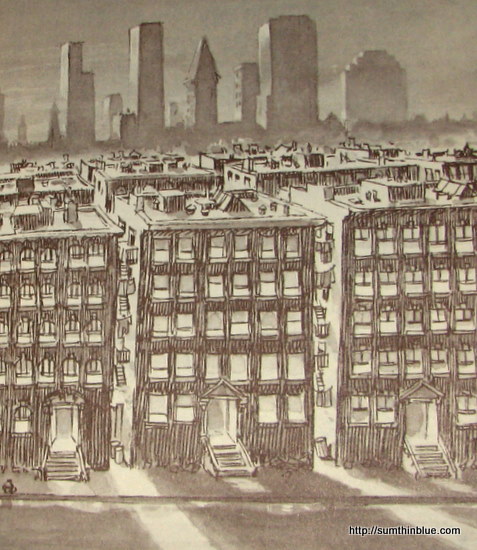
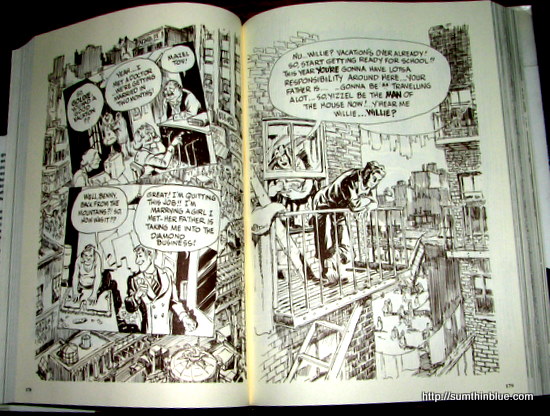
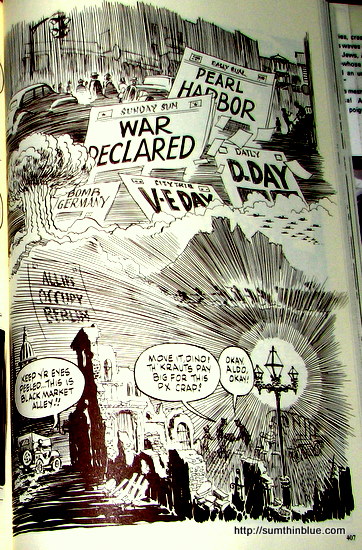
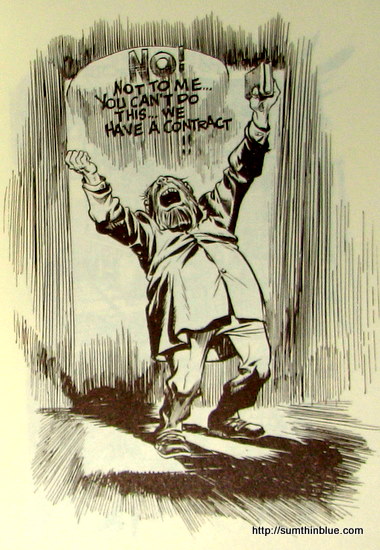
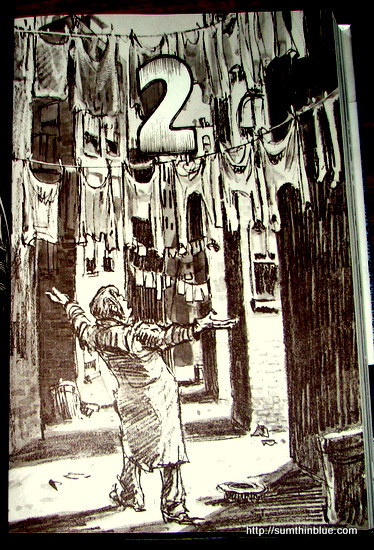
Those are awesome!
I’m following.
ecwrites.com
Thanks Elisa! Welcome to Bookmarked!